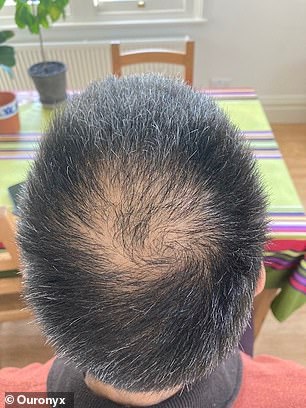Men suffering from hair loss and receding hairlines are now opting for a treatment they can receive during their lunch break.
Decades ago, those who felt insecure about their hair bleaching would cover their scalp with a hat or accept their fate.
But now there’s a convenient new surgery that some people are choosing to do to get their hair back, and it costs a fraction of the price of some hair transplants.
Micrografting uses a person’s own skin tissue to prevent further loss and stimulate existing follicles to grow longer and thicker, with minimal scarring reported by patients.
Ouronyx, based near Green Park in London, offers the treatment and says it is “virtually painless and leaves no scarring”, while some people may have to take up to two weeks off work after a hair transplant.
The procedure costs £2,950. According to the NHS, a hair transplant, for comparison, can cost between £1,000 and £30,000.
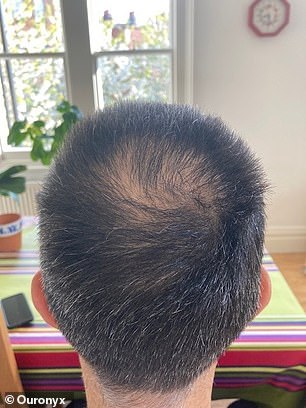
The company first tested micrografting with Jean-Marc Choblet, originally from France. Pictured here, from left to right: before treatment and six months later
Small skin grafts are taken from the back of the hairline and near the neck, where the strongest follicles are located.
These are then processed in a specialized device to extract progenitor cells and growth factors and then mixed together and injected back into the areas where hair is sparse.
This treatment only takes one hour, is performed under local anesthesia, and usually only one session is needed.
The company first tested the micrograft on patient Jean-Marc Choblet, originally from France.
He said he had wanted to do something about his hair loss for “a long time” but was never satisfied with the treatments on offer for his condition – androgenic alopecia.
“The injections were done using a vibrating device to distract me from the needle, which meant I could relax and didn’t feel any pain or stress,” Jean-Marc said.
‘The entire treatment took a total of one hour and I came away scar-free and was able to return straight to my office.
‘The very small biopsy points healed within a week and were virtually invisible. Three months later, I went to my hairdresser for a regular haircut and he immediately noticed a difference in my hair.
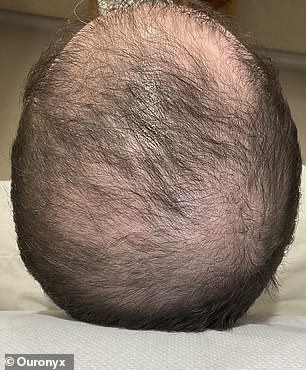
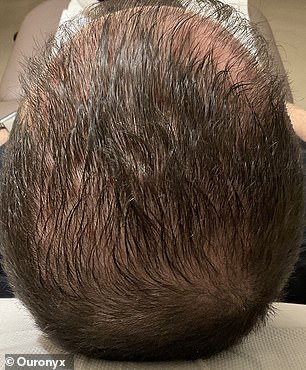
A 32-year-old client said he didn’t want to spend too much money on a hair loss solution and decided to try micrografting. Pictured, from left to right: before treatment and six months after
‘I started to see a new thickness in the crown area of my hair and the quality of my hair follicle has improved.’
Micrografting technology costs £2,950 per treatment, while hair transplants can cost between £1,000 and £30,000 depending on the extent of your hair loss and the quality of the clinic you choose, according to the NHS.
Similarly, a 51-year-old man, chief executive and board member of several charities, who opted for the procedure, said he needed a quick and easy solution for his thinning hair.
She considered getting a hair transplant but decided against it due to her busy schedule.
He went to the clinic, where he was told he was in the early to mid stages of male pattern baldness.
A 3D scan of the hair after the short treatment revealed a 25 percent increase in hair thickness at the front and back of the scalp.
He said: ‘I no longer worry about how my hair looks. The results speak for themselves. I feel younger and more confident about the image I want to project in my career and personal life.
‘Hair loss had started to affect my self-confidence, especially in professional settings.
“But now, after this treatment, I feel revitalized and it shows in the way I carry myself. This treatment not only changed my hair, but it changed the way I see myself. I have more self-confidence.
“The fact that the procedure took less than an hour and had no recovery time was a huge plus given my busy schedule. Considering the minimal time involved and the lack of recovery period, this treatment was a game changer for me.”
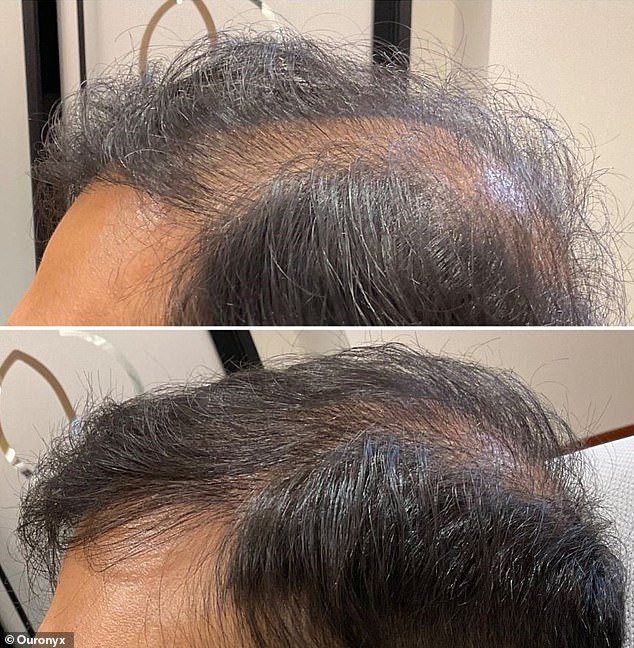
Micrografting also helped a 29-year-old man with his hair loss, which had started at a relatively young age. Pictured, from top to bottom: before treatment and six months after
Dr Marco Nicoloso of Ouronyx said: ‘Micrografting is an incredibly effective treatment and much less invasive than a hair transplant.
‘It uses the same components found naturally in the skin, which the body recognizes when injected into the scalp.
‘Unlike other treatments such as PRP, it includes progenitor cells, which are key to stimulating hair growth.’
Micrografting does not create new hair on the scalp, but the clinic claims that it will stimulate the growth of existing follicles and their subsequent growth and development.
Another 32-year-old client, who works in finance, noticed he was losing hair in his early twenties.
He was concerned that this would make him look older than he was and was later diagnosed with male pattern hair loss.
The client did not want to spend a lot of money on a hair transplant and decided to investigate micrografting and his hair grew thicker after the treatment.
Male pattern baldness is the most common type of hair loss, affecting 6.5 million men in the UK and can cause low self-esteem and, in some cases, depression, according to the NHS.
He said: ‘I used to feel many years older than I actually am, and that really affected how I saw myself, especially in my career.
“I had been looking into different hair loss treatments for a while and didn’t feel like any of the treatments available addressed all of my concerns. I didn’t have the time to do the 10 or 12 treatments required for PRP treatment.
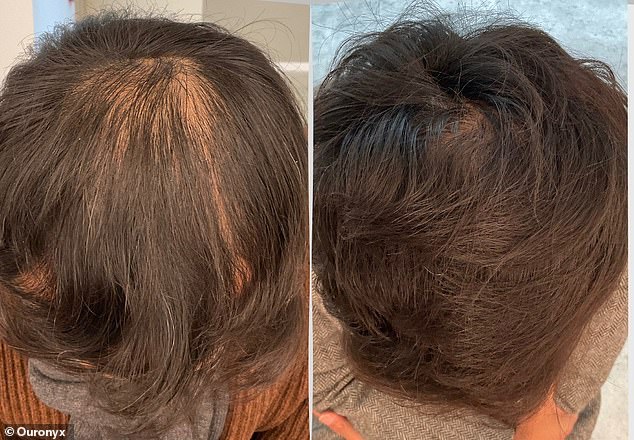
A 51-year-old man, who is a CEO, considered having a hair transplant but decided against it due to his busy schedule and instead tried micrografting. Pictured here, from top to bottom: before treatment and six months after.
‘But micrografting was an excellent treatment solution that really worked.
“Seeing my hair grow back has given me a new sense of confidence. Many of my friends and family have commented on how different I look. I feel like I look my age again and it has made a huge difference both personally and professionally.
“I didn’t realize how much hair loss was affecting my self-esteem until I started seeing results. Now, I go to meetings without that nagging feeling that people are noticing my hair falling out.”
Micrografting also helped a 29-year-old man with his hair loss, which had started at a relatively young age.
He said he feels more confident going out to social events and no longer feels self-conscious about his hair.
The man, who works in the mobility sector, was concerned about his appearance for future events and wanted a quick solution.
She underwent the treatment and was able to return to work immediately afterward. Within six months, she could notice an increase in the thickness of her hair.
He said: “I wasn’t sure how effective the results would be, but after four months it was clear that I started to see results.
‘New hair started growing all over the front of my head and after six months you could clearly see the difference in the thickness of my hair. I no longer worry about my hair falling out and I feel amazing.
“Knowing that my hair is thicker and healthier has completely changed the way I feel about myself – I no longer worry about my appearance.”
“I left the clinic in less than an hour and went back to work.”

